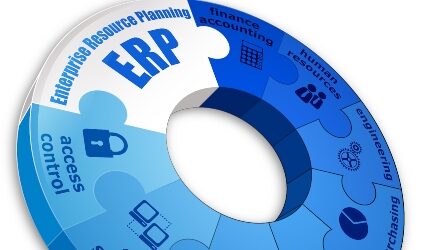Optimizing SAP Across the Multicloud
The SAP world is set to change. By 2027, support for SAP ERP Central Component (SAP ECC) ends, as does support for Oracle, Sybase, Microsoft SQL Server, and IBM Db2. SAP is moving forward with its transformation to C/4HANA and S/4HANA, following a similar path that NetApp took in preparing NetApp® ONTAP® data management software for the digital transformation revolution and the journey to hybrid multicloud.
Looking ahead
Although 2027 appears a long way off, many organizations are planning for the change now. Change is never easy, and early adopters, moving at pace, have taken more than 1.5 years to migrate to SAP HANA. Sure, your mileage will vary, but the recommendation is that you start planning now. In this planning cycle, you’ll have the opportunity to take a step back and review the benefits and value of digitally transforming your SAP operation.
I’ve encountered many SAP customers, and each of them had an SAP environment that consisted of several discrete, but connected, component systems. The common functions were production, development, test, QA, and disaster recovery, plus the processes and automation that surround these functions.

Adding value and saving money
The business-critical nature of the SAP enterprise resource planning (ERP) systems influences the attitude to risk. The SAP system typically holds and optimizes the processes that define the business through dashboards, financial information, trends, ordering, sales, and so on. For this reason, the key performance indicators and SLAs that surround the SAP operation reflect the high level of business risk, if the service is degraded or becomes unavailable.
Cloud mandates from the C-suite are focusing on further improving time to market, optimizing business processes, speeding up data sharing, analyzing data faster, and lowering TCO. And these goals translate to delivering more value and saving money.

This trend, along with the transition to SAP HANA, is focusing the minds of the SAP application owners and IT. Because the SAP operation is critical to business operations, meeting a C-suite cloud mandate for SAP requires meticulous planning. It also requires tools that enable you to move SAP functions to the cloud of your choice with confidence. I’m not suggesting that the production SAP function move to cloud tomorrow, but there’s potential to “do things differently” by considering migration of development, test, QA, and disaster recovery functions to the cloud. These functions are likely to follow a variable resource consumption and performance pattern. Moving these variable consumption functions to the cloud has the potential to lower the TCO and provide a more flexible, responsive environment that will help the business deliver new software functions faster.
The power of integration
For many years, SAP has offered the SAP Converged Cloud, which integrates compute, storage, and networking into shared resource pools that can be provisioned by subscribers. NetApp and VMware provide the foundation for the SAP Converged Cloud. This foundation integrates data management and compute services, which deliver consistent SAP operations across the hybrid cloud. This quote from Ozren Kopajtic, vice president of Global Cloud Services at SAP, demonstrates the scale and depth of the NetApp and VMware integration.
“SAP solutions power many of the world’s leading businesses today, including over 90% of the Global Fortune 2000. NetApp and VMware deliver the scalable, high-performance foundation of SAP’s global public cloud platform, supporting nearly 30 petabytes of information across tens of thousands of virtual volumes and virtual machines, and running one of the largest global deployments of VMware and NetApp technologies.”
There are hundreds of petabytes of SAP on NetApp storage in the cloud. With the integration of the NetApp supplemental datastore in VMware Cloud, and future certification with SAP HANA, existing customers of VMware on SAP will have the choice to reengineer their SAP operations to deliver TCO savings that are not possible to achieve on hyperconverged architectures alone. When SAP VMware Cloud certification is complete, SAP customers will be able to choose to deploy SAP HANA functions on VMware Cloud with the integrated, certified, and supported NetApp supplemental datastore on:
- AWS through Amazon FSx for NetApp ONTAP
- Microsoft Azure VMware Solution (AVS) through Azure NetApp Files
- Google Cloud VMware Engine through NetApp Cloud Volumes Service

2027 is 5 years away. To those who aren’t directly involved in ERP operations, 5 years might feel like plenty of time to plan and migrate—but it isn’t. As you plan your migration to SAP HANA, the integration and certification between SAP, NetApp, and VMware offer you options and choice. This choice allows you to protect and maintain your existing investments and processes. It also opens avenues to explore migration of selected SAP functions to cloud. By migrating the functions you want, you can lower TCO, deliver consistent compute and storage operations across your hybrid cloud, and enable the business to be more responsive at the right cost.





